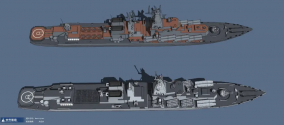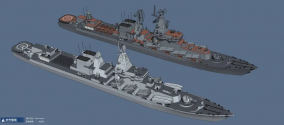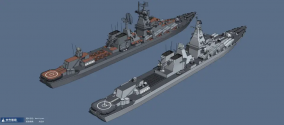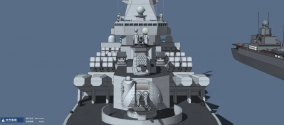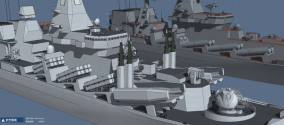Food for thoughts, anyone?
What if China brought one or more Slava-class cruisers and upgraded them, like how they are currently upgrading the 4 Sovremenny-class destroyers bought in the late 1990s and early 2000s?
View attachment 87085View attachment 87086View attachment 87087View attachment 87088View attachment 87089
Putting DF-17 launchers onboard a warship. Quite a big step forward, I would say.
Plus, the UVLS and newer anti-ship missile canisters alongside more modern radars, sensors and fire control sets would have greatly enhance her firepower and survivability, compared to her older Russian sisters.
CGI authored by 大包CG on Weibo.
No.
I'm not going to mince my words here -- but this is astonishingly stupid.
I hope you are joking or having a bit of a giggle, because what you are suggesting is such a waste of money, resources and time and opportunity cost, for a end result of dubious and questionable value and role.
Even hypothetically if the PLAN wanted such a ship with the capability set as you describe, they would be far better off designing a clean sheet hull, which would be cheaper and faster and industrially easier as well.
Buying ex-soviet ships means they would not only be dealing with hulls that have decades of use in them already and that has "enjoyed" decades of Russian Navy level quality maintenance.
It would also require them to rip out all of the internals of the ship, the sensors of the ship, the weapons of the ship, and basically every part of the ship except the hull and maybe propulsion, and then have to force themselves to somehow install domestic subsystems and sensors and weapons into those same small cramped spaces in a foreign hull that is decades old probably with documentation that doesn't even exist anymore.
The way that you are describing the PLAN's Sovremenny MLU as if it is something desirable or useful is frankly appalling as well.
The reason why the Sovremenny MLU that the PLAN are doing is sensible, isn't because the ships themselves now are somehow uniquely capable -- it's because the Sovremennys when they were originally bought, were rapidly understood to be very suboptimized, and arguable white elephants.
They were purchased at the time because the PLAN needed a rapid infusion of something resembling some semi-modern large surface combatants with a degree of area air defense and more capable anti shipping capability than what they had at the time. But very quickly, the Sovremenny class became overtaken by even modern PLAN frigates in production by the mid/late 2000s in key domains of capability and technology. This MLU that they did for the Sovremenny class makes them a "not obsolete" but they are not somehow "capable".
In fact, for their displacement, the MLU'd Sovremenny are very much far less capable than the slightly lower displacement destroyer classes like 052D and even 052C.
That is to say, talking about the MLU Sovremennys as if it is a "good idea" or a "model for what could be done if the PLAN purchased another set of ancient Russian/ex-soviet ships" is absolutely the opposite of the lesson to take.
Instead, the correct lesson to take is that one should not buy ancient Russian/ex-soviet ships if one is able to help it, because it means you'd have to spend years of painful MLU just to end up with a ship that is at a similar technological level and level of AAW capability to a frigate half of the displacement of a Sovremenny, if you don't simply want to retire the ships and put them out of their misery.
Seriously -- looking at the PLAN's purchase of Sovremennys and their MLU of those ships, the lesson should NOT be "oh that went well, let's do it again but with an even more difficult and larger ex-Russian/Soviet ship!"
Instead, it should be: "Oh my god, holy f***, that was painful and what we got out of it was only barely worth all of the effort, money and time we put in, let's make sure we never go through anything like that again."
大包CG makes some amusing "what if" depictions/monstrosities, or mishmashes, or "hypothetical MLUs".
They are not meant to be taken seriously.
Please never suggest anything like this again.

